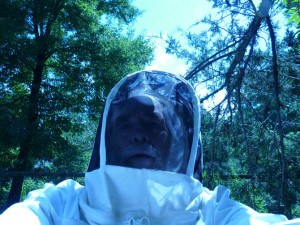Spring Full Bee Hiving Moon
Men. Emotions surprise us, batter us into consciousness, wake us up. Hello, grasshopper, you are about to be A GRANDFATHER. Huh? How did that happen? Of course, you know exactly how it happened, but it still reaches inside and turns on the amazement switch.
Some old man, dimly known, shambles out of your past and you say, “Could that be me? That old fella?”
“Nah, I’m too young,” you say.
The event comes to pass and there you are with Ruth or Dave or Holly or Ava, a tiny pink wonder, yet, too, the most common event of all among us, a baby, a fledgling human, vulnerable, needy. Somehow ours. Somehow not ours.
Shaken but perhaps not yet stirred a gong sounds somewhere, a genetic clang or a cultural bong, but whatever deep, resonant, compelling and there you are at the door reserved for Elders Only. This door, this torii, guards the pathway to the future, a divided path on which your grandchild will walk as a living memory in one direction while you stride resolute toward our last great journey.
Here’s the joy. We can walk along this path a ways, maybe even a long ways, together.
What’s the nature of this walk? Who knows? One grandparent, one grandchild. A unique way, created by the two, reserved for them alone. Another grandchild, another way.
We spoke of these things tonight at Tom Crane’s house. Mark, brother Mark, went along. Warren, Charlie, Bill, Scott, Tom, Frank, Mark, Stefan were there. We remembered our grandfather dying in front of us at four, of grandfather’s disappeared by distance and alcohol, of grandfather’s willing to play along with a silly joke, a grandfather who drank and drank and drank, having his last jug delivered the day after he died, of a grandfather with green flannel underwear that buttoned, puzzlingly, in the rear, who poured coffee into a cup, then a saucer and drank from the saucer, who made syrup from water and sugar, of grandfathers in the house, there to talk to, to go to, grandfathers abused by fathers. We spoke of all these things nestled inside our own hopes, our joys, the wonders of our own journey through the torii of generation.
Men wonder about these things, dream about them, hope for them. See themselves with a tiny hand in theirs, walking along, picking dragons and mermaids out of the clouds. Whistling.

 maybe enough to get them through to the dandelions.
maybe enough to get them through to the dandelions. singing, no poker, no beer?” Nope.
singing, no poker, no beer?” Nope.